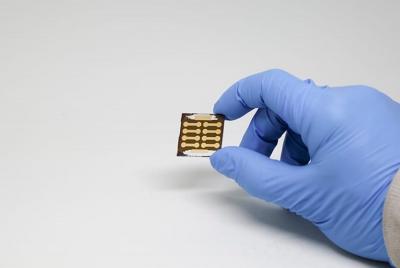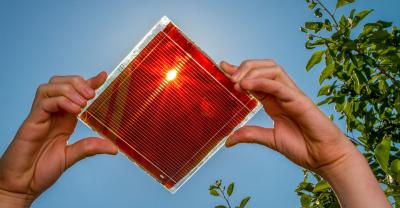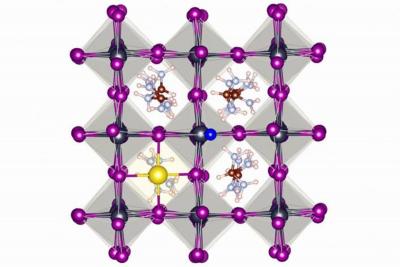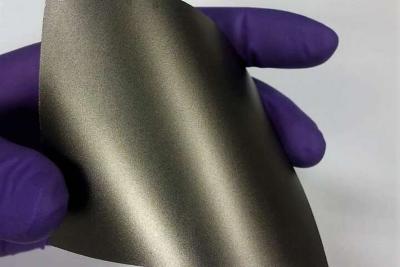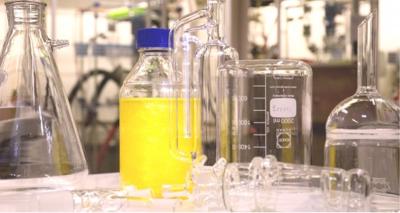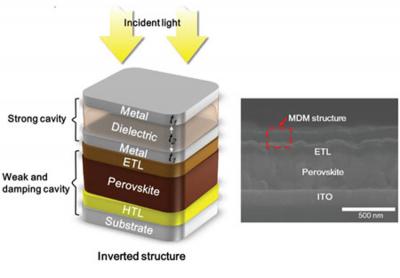Collaborative team makes a major step forward in the search for stable and practical perovskite-based photovoltaic devices
A collaborative research team from Los Alamos National Laboratory, Rice University, Purdue University, Northwestern University, Institut FOTON CNRS UMR 6082 (France) and Argonne National Laboratory has created a number of hybrid perovskite solar cells with a FA0.7MA0.25Cs0.05PBI3 composition and measured them using a variety of techniques including grazing-incidence wide-angle x-ray scattering (GIWAXS) maps at the X-ray Science Division 8-ID-E x-ray beamline of the APS (an Office of Science user facility at Argonne).
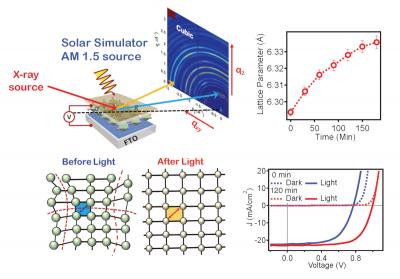 The experimental setup (top left) and the corresponding light-induced lattice expansion effect, which leads to curing defects and relieving of lattice strain (bottom left) and as a result an increase in the open circuit voltage of a solar cell
The experimental setup (top left) and the corresponding light-induced lattice expansion effect, which leads to curing defects and relieving of lattice strain (bottom left) and as a result an increase in the open circuit voltage of a solar cell
In most of the cells, the researchers noted a substantial improvement in PCE from 18.5% to 20.5% under continuous light soaking with a 1-sun (100 mW/cm2) source as the lattice structure of the hybrid cells uniformly expanded. This expansion relieved local strains in the bulk material and better aligned the crystal planes, as evidenced by narrowing and uniform shifting of the Bragg peaks toward lower scattering values as seen by GIWAXS. The researchers explain that constant illumination generates electron-hole pairs in the perovskite material, decreasing the distortions of some bonds while elongating others, resulting in a generalized lattice expansion and relaxation. A similar phenomenon was seen with pure MAPbI3 thin films, suggesting that such lattice expansion under light is common for hybrid perovskite materials.
